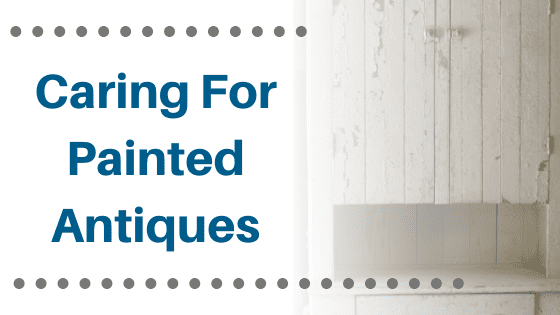
01 Apr Restoring and Caring For Antique Painted Furniture
It’s what’s beneath the surface that counts and this is especially true when it comes to furniture with paint that is crumbling off of it.
Many people believe that when an antique has paint that is cracked or peeling away that the piece is not salvageable. I’m here to debunk that myth. If you are looking to restore your antique treasures to their original beauty then let’s begin by talking about stripping the furniture of the old paint so we can begin the restoration process.
First Step: Stripping
First things first, we need to get rid of the old so we can prepare for the new. Old paint begins to crack for a number of different reasons including the use of poor-quality paint originally, weather conditions, the paint becoming brittle over time, etc. We would first remove all of the hardware from the furniture. Then we begin to strip the old paint off of all of the applicable surfaces and get down to the original wood. We dip the piece into our stripping vat and begin to scrub away all of the original cracking paint to reveal the beautiful wood underneath. By doing this, we get a clean surface for us to work with. We would then move from our stripping room into our workshop area.
Second Step: Preparation
In the workshop, we would lightly sand down every piece of the furniture and repair any part of the furniture that needs repair. In our workshop, we focus on the finer details of restoring your furniture. Everything from split wood, broken legs, removing nails that are sticking out, cuts and scrapes on the surface, and so much more. We make sure that everything that comes out of the workshop is to the highest quality that we can make it before we begin the final step of applying a new coat to the bare wood.
Final Step: New Coat
Now that we have a fully repaired wooden antique, we wipe it down to remove any excess dust that it may have gathered from the sanding process. This allows us to apply a clean final coat of paint or stain to the piece. After moving the furniture into our finishing room, we can apply a number of different stains to get the piece to show off its beautiful wooden base or paint it with a new coat of high-quality paint to ensure a lasting coat.
Keeping it clean and clear
Before washing a piece of painted furniture, wipe it with a soft lint-free cloth to remove built-up dust. Mild soap and water and a soft cloth are the basic tools you’ll need to clean painted furniture. Never use any type of degreaser, furniture spray or polish, alcohol-based or acidic cleaning product that may discolor or damage the finish. Avoid using wax as it may melt when it comes in contact with a hot cup when placed in direct sunlight close to a window.


